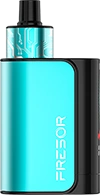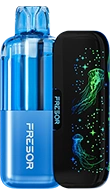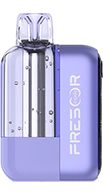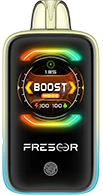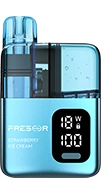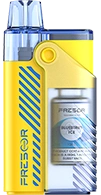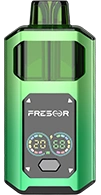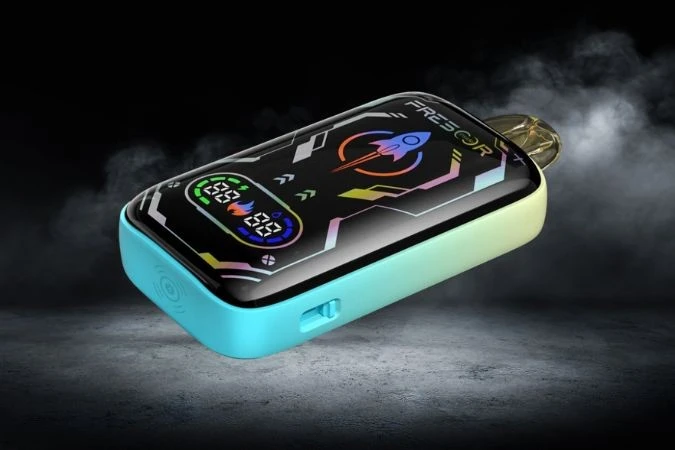What Wattage Should I Vape At?

23 May 2024
Vaping has become an increasingly popular alternative to traditional cigarettes, offering a wide range of flavors and customization options. One of the most important factors in achieving a satisfying vape is finding the right wattage to use with your device and atomizer. The wattage you vape at can greatly impact the flavor, vapor production, and overall vaping experience. In this comprehensive guide, we'll explore the factors to consider when choosing your preferred vaping wattage and provide tips to help you find the sweet spot for your setup.

Understanding Ohm's Law and Wattage
Before we dive into the specifics of vaping wattage, it's essential to understand the relationship between voltage, resistance, and wattage. Ohm's law states that the current in a circuit is directly proportional to the voltage and inversely proportional to the resistance. This relationship can be expressed as: Watts (W) = Volts (V) × Amps (A).
In the context of vaping, the resistance of your atomizer coil and the voltage output of your device determine the wattage at which your device will operate. Most modern vaping devices have built-in safety features that automatically adjust the wattage based on the resistance of your vape coil, ensuring a safe and enjoyable vaping experience.
Factors to Consider When Choosing What Wattage Should I Vape At?
When selecting the appropriate top wattage level for your vape, several factors come into play. These include:
Coil resistance: The resistance of your atomizer coil, measured in ohms (Ω), plays a crucial role in determining the optimal wattage range. Generally, lower resistance coils (below 1Ω) require higher wattages, while higher resistance coils (above 1Ω) work better at lower wattages.
Coil material: The material used to construct your coil can also influence the ideal wattage range. For example, kanthal coils typically operate well at higher wattages, while stainless steel and nickel coils may perform better at lower wattages.
Coil mass: The mass of your coil, which is determined by the thickness of the wire and the number of wraps, affects the amount of power needed to heat it. Larger coils with more mass may require higher wattages to achieve optimal performance.
Airflow: The amount of airflow your atomizer allows can impact the ideal wattage. Restricted airflow may require lower wattages to prevent dry hits and ensure a smooth, flavorful vape.
Personal preference: Ultimately, the best wattage for you will depend on your personal preferences. Some vapers enjoy a warmer, more intense vape, while others prefer a cooler, more subtle experience. Experiment with different wattages to find what suits your taste buds best.
Explore Vape Wattage Ranges for Different Coil Resistances
As mentioned earlier, the resistance of your atomizer coil is a crucial factor in determining the optimal wattage range. Here are some general guidelines on coil's suggested wattage range:

Sub-ohm coils (below 1Ω): These coils typically operate well between 40-100W, depending on the specific resistance and your personal preferences.
Mouth-to-lung (MTL) coils (above 1Ω): These coils are designed for a tighter draw and are often used with higher nicotine e-liquids. They generally perform best at lower wattages, ranging from 10-30W.
Rebuildable atomizers (RBAs): The wattage range for RBAs can vary widely depending on the coil build and your preferences. It's essential to start at a lower wattage and gradually increase until you find the sweet spot for your setup.
Remember, these are just general guidelines, and the optimal wattage may vary depending on your specific setup and preferences.
Adjusting Wattage for Different Vaping Styles
The wattage you choose can also depend on your preferred vaping style. Here are some tips for adjusting wattage based on power range and your vaping preferences:
Flavor chasing: If your primary goal is to maximize flavor, start at a lower wattage and gradually increase until you find the point where the flavor is most pronounced. Be careful not to exceed the recommended wattage range for your coil, as this can lead to a burnt taste.
Cloud chasing: For those who enjoy producing large clouds, higher wattages are generally preferred. However, it's essential to ensure that your coil and wicking material can handle the increased power to prevent dry hits and damage to your device.
Nicotine satisfaction: If you're looking for a satisfying nicotine hit, lower wattages may be more suitable, especially when using higher nicotine e-liquids or mouth-to-lung devices. Higher wattages can potentially reduce the effectiveness of nicotine, leading to a less satisfying vape.
Throat hit: The throat hit, or the sensation you feel in your throat when inhaling, can be influenced by wattage. Higher wattages tend to produce a more pronounced throat hit, while lower wattages offer a smoother, more subtle sensation.
Potential Risks of Vaping at High Wattages
While vaping at higher wattages can produce impressive clouds and intense flavors, it's essential to be aware of the potential risks:

Dry hits: Vaping at wattages that exceed the recommended range for your coil can lead to dry hits, which occur when the wicking material is unable to keep up with the rate of vaporization. Dry hits can result in a harsh, unpleasant taste and may even damage your coil.
Battery drain: Higher wattages require more power from your device's battery, leading to faster battery drain and shorter battery life. It's crucial to use a high-quality battery and ensure that your device is capable of handling the increased power demands.
Device safety: Exceeding the maximum wattage or amperage rating of your device can lead to safety issues, such as overheating or even device failure. Always refer to your device's manual and never exceed the recommended limits.
Coil lifespan: Vaping at higher wattages can shorten the lifespan of your coils, as the increased heat and power can cause the coil and wicking material to degrade more quickly.
Finding the Sweet Spot
The key to finding the perfect wattage for your vape is experimentation and patience. Start at a lower wattage setting and gradually increase until you find the point where the flavor and vapor production are most satisfying to you. Be mindful of your coil's recommended wattage range and adjust accordingly.Remember, vaping is a personal experience, and what works best for one person may not be ideal for another. Don't be afraid to experiment and find the wattage that suits your preferences and setup best.
Conclusion
Choosing the right wattage for your vape is crucial for achieving a satisfying and enjoyable experience. By understanding the factors that influence optimal wattage, such as coil resistance, material, and personal preferences, you can find the sweet spot for your setup. Always prioritize safety by staying within your vaping device name's and coil's recommended limits and being mindful of potential risks like dry hits and battery drain.Happy vaping, and remember to experiment and find the wattage that works best for you!
Frequently Asked Questions On What Wattage Should I Vape At?
Can I use the same wattage for different coils?
No, it's not recommended to use the same wattage for different coils, as each coil has its own unique characteristics and optimal wattage range. The resistance, material, and mass of the coil all play a role in determining the appropriate wattage. Using the same wattage for different coils can lead to issues like dry hits, poor flavor, or even damage to your device or coil. It's essential to adjust the wattage according to the specific coil you're using and follow the manufacturer's recommendations or guidelines.
How often should you clean your vape device?
It is generally recommended to clean your vape device at least once a week if you are a regular/frequent user.
How does wattage affect battery life?
Higher wattages require more power from your vape device's battery, resulting in faster battery drain. If you frequently vape at higher wattages (e.g., above 80W), you may need to carry spare batteries or recharge more often.Conversely, vaping at lower wattages (e.g., below 40W) will extend your battery life significantly between charges. Finding the right balance between your desired vaping experience and battery longevity is key.
What is the difference between wattage and voltage in vaping?
Voltage refers to the electrical potential or "push" that causes current to flow through the vape coil. It measures how much power is flowing through the device.Wattage refers to the amount of power output being delivered to the coil to generate heat and produce vapor. It determines how hot the coil gets.

